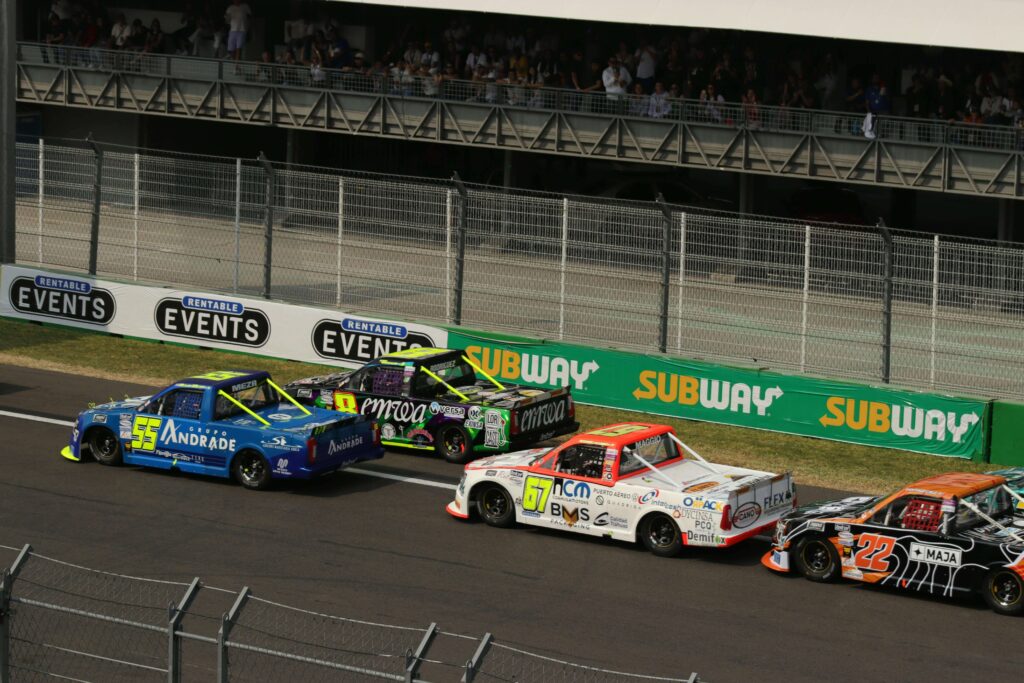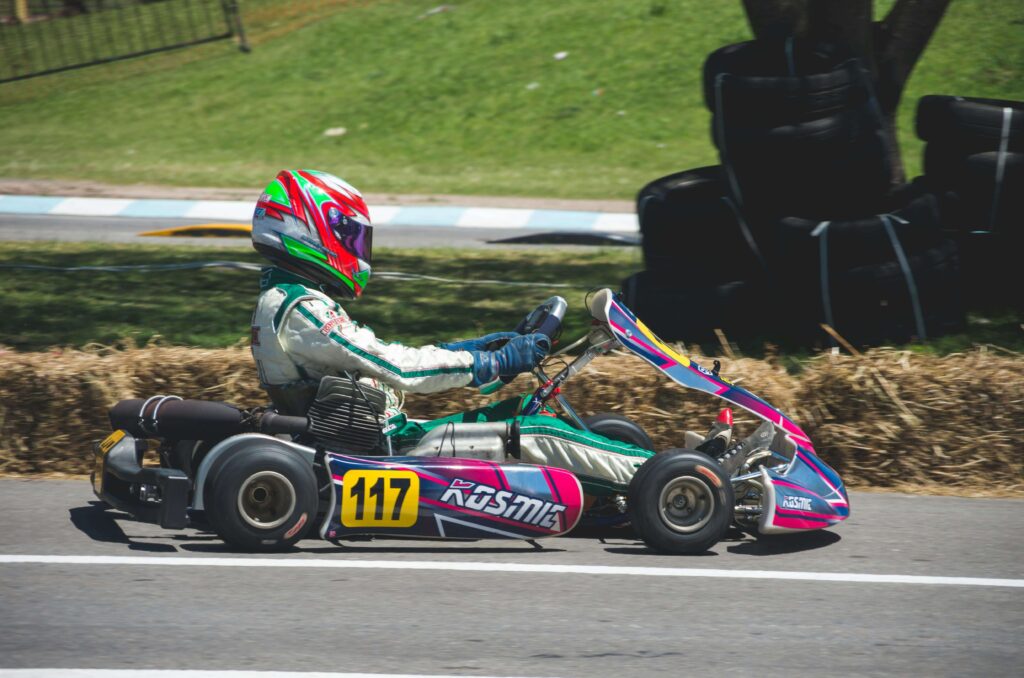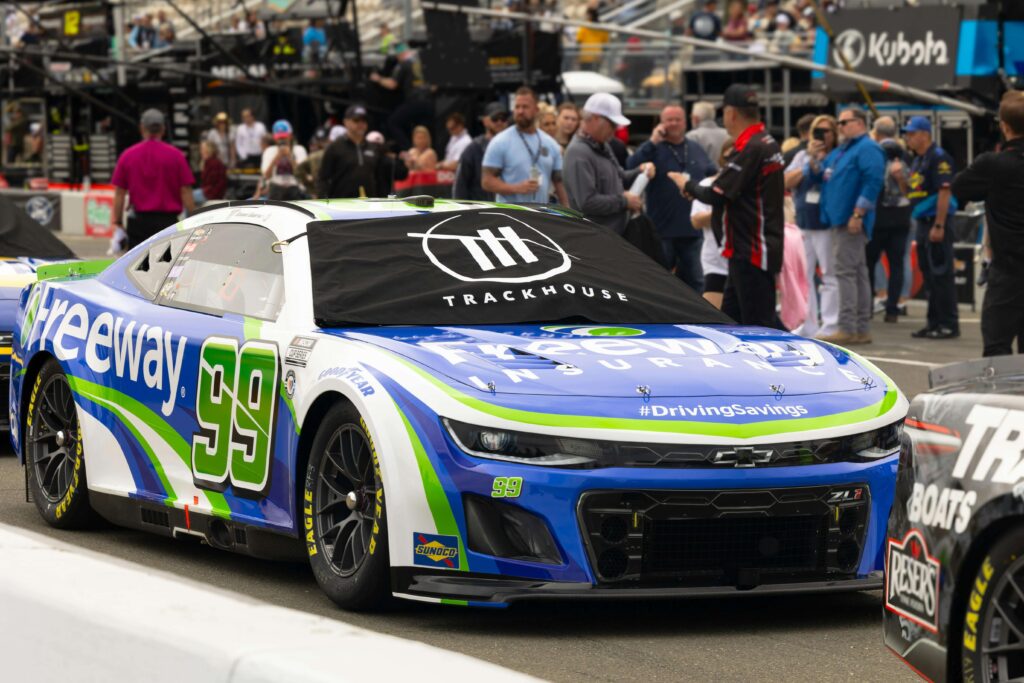The roar of a NASCAR engine is like nothing else—a deep, thunderous sound that vibrates through the air and shakes the ground beneath you. If you’ve ever watched a NASCAR race, you’ve likely felt your heart race alongside the drivers, gripped by the thrilling speed and precision it takes to navigate those tight turns and high-speed straights. You might have even wondered, “How to become NASCAR driver?”
In This Guide
Becoming NASCAR driver isn’t an easy road, but if you’re driven by the love of racing, have the grit to stick through tough challenges, and possess the determination to succeed, then you could find yourself behind the wheel of a stock car one day.
In this guide, we’ll walk you through the step-by-step process of how to become NASCAR driver, from starting in karting to ultimately securing a spot in NASCAR’s elite series. Whether you’re just getting started in racing or have been chasing this dream for years, this guide will help you navigate the path toward achieving your goal of becoming a NASCAR driver.

How to Become NASCAR Driver: Your Ultimate Roadmap to Success
Understanding NASCAR – What Does It Take to Be a Driver?
Before diving into the specifics of how to become NASCAR driver, it’s essential to understand what NASCAR is all about and what being a driver entails.
What is NASCAR?
NASCAR (National Association for Stock Car Auto Racing) is the most prominent professional motorsport series in the United States. The organization oversees several racing leagues, including the NASCAR Cup Series, Xfinity Series, and Truck Series, which are all part of stock car racing. These races take place on various tracks, each with its own set of challenges and characteristics.
As a NASCAR driver, you’ll race highly engineered stock cars that are designed for maximum speed and safety. Each series offers a different level of competition, with the Cup Series being the pinnacle of the sport.
Qualities of a NASCAR Driver
Becoming a successful NASCAR driver requires more than just knowing how to drive fast. You’ll need:
- Physical fitness: Racing requires excellent stamina and strength. You’ll be in a car for hours at a time, enduring G-forces and extreme temperatures. A fit driver can handle the stress and maintain focus during long races.
- Mental toughness: Racing can be mentally exhausting. Drivers must stay sharp, calm under pressure, and make quick decisions. The mental fortitude required is as crucial as physical skill.
- Teamwork and communication skills: NASCAR drivers don’t race alone. They work closely with their team, including spotters, crew chiefs, and pit crews. Being able to communicate clearly and work as part of a team is essential.
Career Path to Becoming NASCAR Driver
The path to becoming NASCAR driver isn’t straightforward, and it takes years of dedication and experience to get to the top. While some drivers start young, others come from different racing backgrounds. The journey typically involves progressing through different racing series and working your way up.
Step 1: Start Racing Early – Your Foundation in Motorsport
Most NASCAR drivers don’t wake up one day and decide to race professionally. Instead, they start young and work their way up through the ranks. Karting is where many future NASCAR stars begin their journey.
Karting – The First Step

If you’re serious about how to become NASCAR driver, karting is the best place to start. It’s the entry-level motorsport where you’ll learn the basic skills of racing—handling a car, understanding track layouts, and learning race strategy.
Why Karting Is Crucial for Young Drivers
- Cost-effective entry: Karting is one of the most affordable ways to get started in racing. Though the equipment can be pricey, it’s far less expensive than entering full-sized cars.
- Building skills: Karting teaches essential racing skills such as acceleration, braking, cornering, and maneuvering in tight spaces. These skills are transferable to larger vehicles.
- Competitiveness: Karting is highly competitive, and the skills you develop will set the foundation for your racing career.
What You’ll Need for Karting:
- A kart: Entry-level go-karts can cost a few thousand dollars, but more advanced models will cost more.
- Safety gear: A helmet, racing suit, gloves, and shoes are necessary.
- Racing license: Many local karting tracks require a racing license, which you can obtain by taking a brief training course.
Transitioning to Open-Wheel Racing or Late Models
Once you’ve spent a few years in karting and have gained sufficient experience, the next logical step is to transition to open-wheel racing or late models. Open-wheel cars are single-seater race cars, and late models are stock cars that closely resemble those used in NASCAR.
Why Move to Full-Size Cars?
- It’s a necessary progression for drivers looking to make a name for themselves in higher series, including NASCAR.
- Full-size car racing provides more exposure to sponsors, race teams, and scouts.
Step 2: Building Your Skills and Gaining Experience
With karting and early racing experience behind you, it’s time to build upon those foundations. The next step is to hone your skills, gain exposure, and race consistently.
Racing School and Professional Training
While racing experience is essential, formal training at a racing school can give you the edge you need to stand out. Schools like the Skip Barber Racing School or the Richard Petty Driving Experience provide professional training in car control, racecraft, and strategy.
What You’ll Learn at Racing Schools:
- Car handling techniques
- How to navigate tight corners at high speed
- The principles of race strategy and pit stops
Climbing the Ladder: From Local Tracks to National Recognition
Once you’ve completed racing school, your next step is to start competing in regional and national racing leagues. This is where the rubber meets the road. Many NASCAR drivers began their careers in the ARCA Menards Series or NASCAR K&N Pro Series.
How to Get Started in Regional Series:
- Look for opportunities to race in local events at dirt tracks or asphalt ovals.
- Build your reputation by consistently performing well and winning races.
- Use social media to build your personal brand and attract sponsorships.
Creating a Racing Resume and Building Relationships
As you progress in your racing career, having a solid racing resume is key. Your resume should include:
- Your racing experience (events, wins, and podium finishes)
- Sponsors or partnerships
- Media coverage and press mentions
Building relationships with sponsors, race teams, and other drivers is crucial to advancing your career. Networking and staying visible within the racing community will open doors to bigger opportunities.
Step 3: Join a NASCAR Development Program
Once you’ve gained recognition in regional racing series, the next step is to join a NASCAR driver development program. These programs are designed to nurture young talent and give them the exposure they need to progress to NASCAR’s top series.
What Are NASCAR’s Driver Development Programs?
NASCAR has a few initiatives to help budding drivers move up the ranks. One such program is NASCAR Next, which helps talented young drivers get noticed by major racing teams. Being a part of this program could be your ticket to getting into the NASCAR Cup Series.
How to Get Noticed by NASCAR Teams:
- Perform consistently in regional series and attract attention through your racing results.
- Use your racing resume to approach NASCAR teams and development programs.
- Be proactive about building relationships with team owners, sponsors, and agents.
Step 4: Working Your Way Into NASCAR’s Regional Series
NASCAR’s regional leagues, such as the ARCA Menards Series, are crucial stepping stones toward the Cup Series. Competing in these leagues will provide you with experience, increased visibility, and networking opportunities that are necessary for moving up.
NASCAR’s Regional Leagues: The Path to the Big League
- ARCA Menards Series: The ARCA series is considered a developmental league, and many NASCAR drivers have made their mark here before moving on to the big leagues. If you perform well, it could lead to opportunities in NASCAR’s Xfinity Series or Cup Series.
- NASCAR K&N Pro Series: The K&N Pro Series is another essential developmental league that many NASCAR drivers pass through on their way up.
Building Your NASCAR Career Through Sponsorships
Sponsorships are a key part of any NASCAR career. As you build your skills and start racing in larger events, securing sponsorship deals will help cover the costs of racing and can even land you a full-time seat with a NASCAR team.
Step 5: Entering the NASCAR Cup Series – The Final Frontier
The ultimate goal for any aspiring NASCAR driver is to make it into the NASCAR Cup Series—the top-tier competition that features the best of the best. To break into the Cup Series, you need talent, perseverance, and the right opportunities.
Breaking Into the Cup Series
You’ll need years of experience in lower series to qualify for the Cup Series. However, with consistency, talent, and the right connections, it’s possible to make the jump. Many drivers enter through the Xfinity Series or Truck Series, racing full-time before making their Cup debut.
Securing a Spot on a NASCAR Team
Landing a seat with a NASCAR team requires more than just driving skills. You’ll need a
combination of performance, sponsorships, and the right timing. Having a strong network in the industry will play a vital role.
Conclusion: Your NASCAR Journey Begins Now
How to become NASCAR driver is a journey that requires patience, persistence, and passion for racing. From karting to developing your skills through regional series, the road to NASCAR is long but rewarding. By staying dedicated, seeking the right training, and building valuable connections, you can increase your chances of making it to the top.
FAQs: How to Become NASCAR Driver
- How old do I need to be to become a NASCAR driver?
- You typically need to start at a young age—usually in your teens.
- Is karting necessary to become a NASCAR driver?
- Karting is a great way to develop the skills you need, though it’s not mandatory.
- How can I get sponsorship for NASCAR?
- Building a strong racing resume and networking within the motorsport industry are key to attracting sponsors.
- Can I go straight to the NASCAR Cup Series?
- Most drivers come up through the ranks in lower NASCAR series before making it to the Cup Series.
Ready to pursue your dream of becoming a NASCAR driver? Start now and accelerate your way to success!

